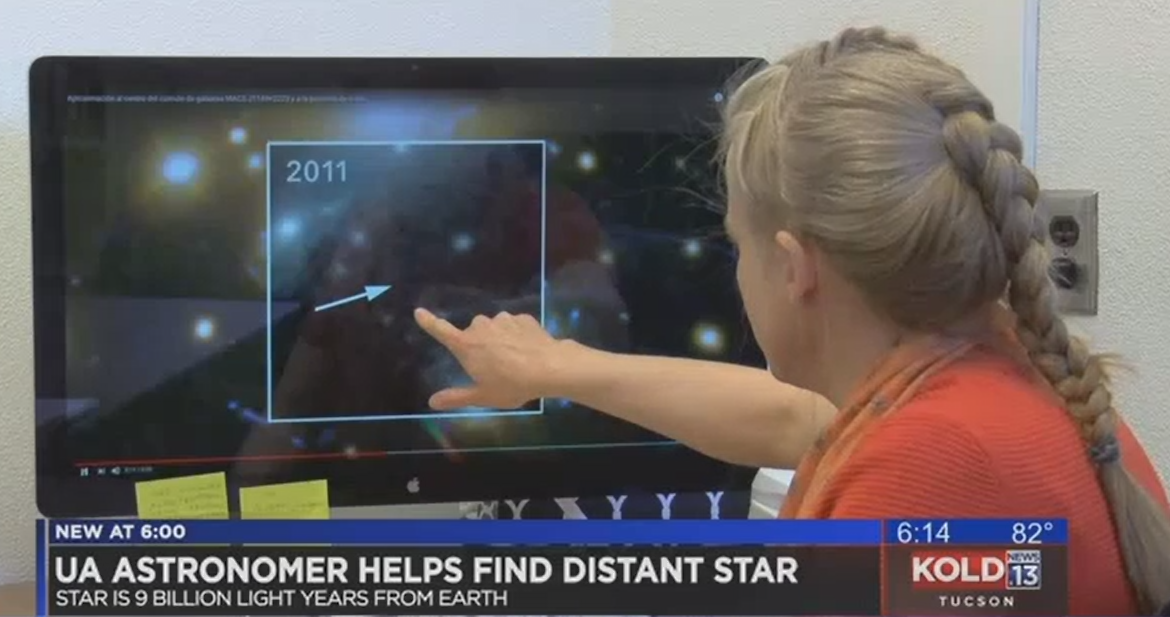Space Grant Faculty Mentor, Brenda Frye, Announces Discovery of Star 9 Billion Light Years Away

The University of Arizona has announced a new discovery that has enabled astronomers to see the most distant star ever. It's nine billion light years away. The star was seen through a cosmic quirk, which allowed astronomers to see the star that is 100 times farther than they've seen in space before. U of A Astronomer and Physics instructor, Brenda Frye, who worked on the team that discovered the star said "I think initially it was disbelief, probably did something wrong." However following peer review, the star, nicknamed Icarus, after the Greek mythological character, has been verified and the news released. "Up until now the most distant stars we could find was millions of light years from us," she said. "This new discovery pushed this to earlier times, some nine billion light years away."
Frye says this is another step towards seeing the outer edges of the universe, which is estimated to be some 14 billion light years away. "This is a big step," she said. "I think we'll probably get there." That confidence is partly fueled by the James Webb Telescope which is scheduled to be launched in 2020, although it is still a bit behind schedule. Frye has been part of the team that has been working on the nearly $9 billion telescope for the past ten years. With the James Webb telescope and her specialty, which is finding natural telescopes in space like the one used to find Icarus, she believes its only a matter of time until they reach the outer edges of the universe.
The cosmic quirk, which allows for the magnification is called "gravitational lensing" and makes extremely faint and distant objects bright enough to see. "The reason this is so exciting is because even with the best telescopes on our planet, we still cannot see the very first stars that formed our universe," she said. But with the addition of gravitational lensing, more is possible.
"We want to know can we see a star turn on for the first time." she said. And that could lead to all sorts of possibilities when studying other galaxies as well as our own. "Like the Milky Way which have enough richness to them, you have stars like the sun and planets like earth and the chemistry and biology which have life and so on," Frye said. "Where did all of that come from is really the story."
By Bud Foster, Reporter, Tucson News Now
UA Astronomer Announces Discovery of Star 9 Billion Light Years Away

